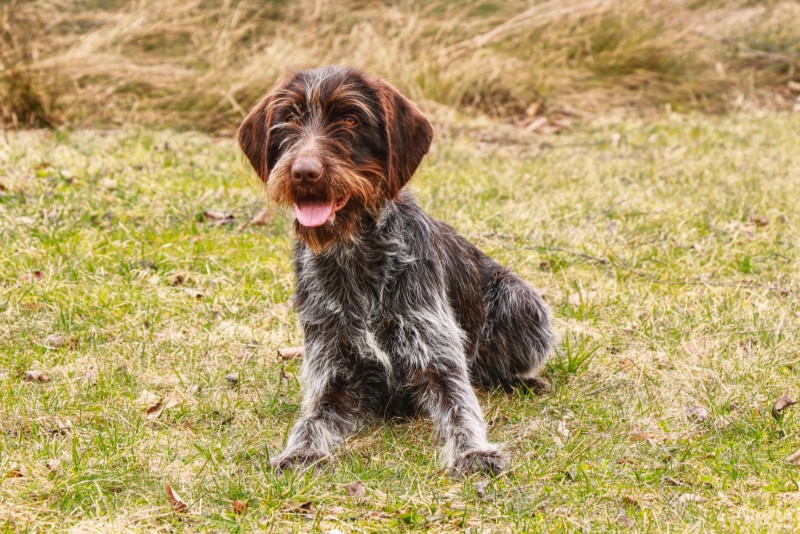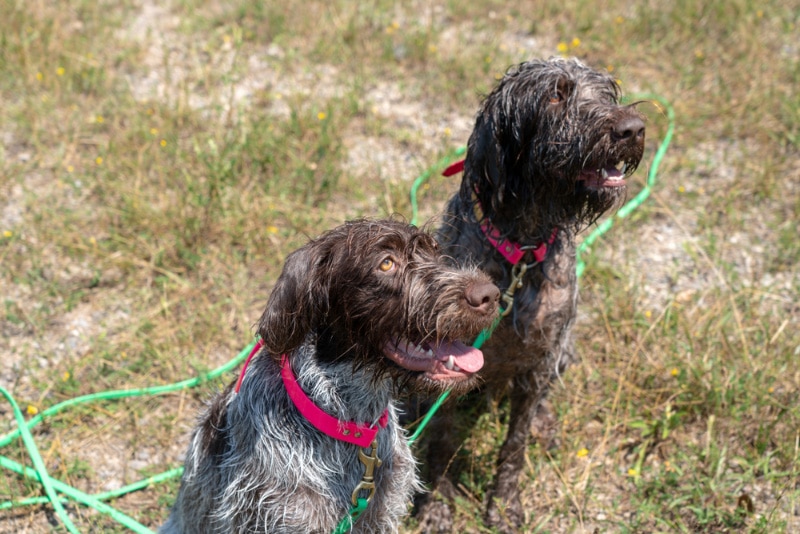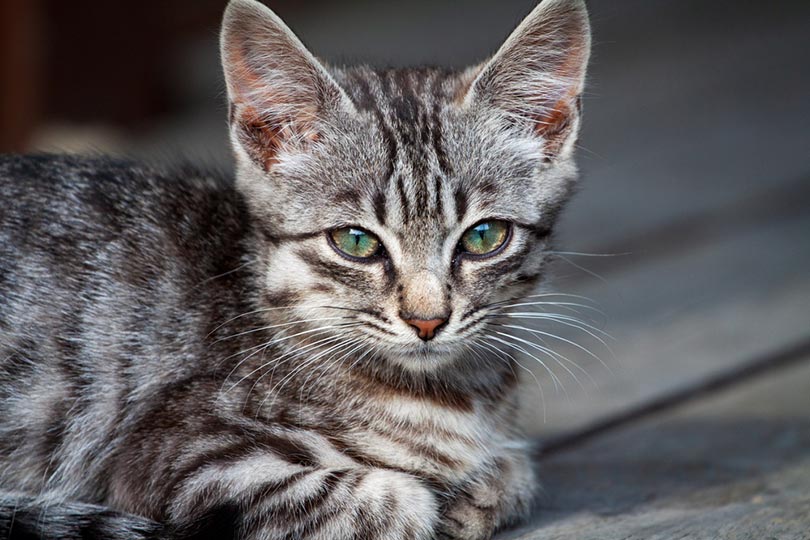10 Wirehaired Pointing Griffon Facts (Explained By Our Vet)

Updated on

Are you already a fan of the Wirehaired Pointing Griffon? Or perhaps you are researching breeds, wondering which dog will be the best fit for your family or lifestyle. If you are looking for a companion to keep you on your toes and to enjoy the great outdoors with, then this breed might be right up your alley. Originally bred for hunting, these energetic but highly trainable dogs are not the ideal choice for the inexperienced owner, but in the right hands, the Wirehaired Pointing Griffon can be a wonderful companion, worker, and family member.
Wirehaired Pointing Griffon Vital Statistics:
| Lifespan: | 12 – 15 years |
| Height: | Male: 22 – 24 inches; Female: 20 – 22 inches |
| Weight: | Male: 50 – 70 pounds; Female: 35 – 50 pounds |
The Top 10 Wirehaired Pointing Griffon Facts
1. They Have More Than One Name
This breed is also known as the Korthals Griffon, named for Dutchman Eduard Karel Korthal, who developed the breed in 1870.

2. They Were Created Relatively Quickly
Most remarkable is how quickly Korthal stabilized the Wirehaired Pointing Griffon by accurately identifying and selecting traits to be passed on to the next generations. Unbeknownst to him at the time, Korthal was following the principles of Mendelian Inheritance, a pattern that had only just been described by Gregor Mendel in 1865.1
3. The Creator of the Wirehaired Pointing Griffon Was Given a Medal
Korthal’s achievements earned him the recognition of the German Emperor, who awarded him a medal in 1890 to celebrate his success. Sadly, Korthal would die 6 years later, at the age of 44, from cancer.
4. They Were Officially Recognized in 1991
The Wirehaired Pointing Griffon breed was officially recognized by the American Kennel Club in 1991. The breed has steadily gained popularity, rising in the AKC ranks from the 80th most popular breed in America in 2013 to number 57 in 2022.

5. They Mature in a Few Years but Remain Young at Heart
Wirehaired Pointing Griffon enthusiasts describe them as reaching mental maturity by age four but remaining a puppy at heart for their entire lives, meaning that you should be prepared for many years of enjoyment with this fun-loving dog.
6. They Were Originally Bred for Hunting and Retrieving
The Wirehaired Pointing Griffon is classified as a gundog, bred for hunting and retrieving. They have a particularly strong hunting drive, which, if not employed in the hunting arena, must be channeled in other ways, such as scent training, agility, or other mentally stimulating endeavors. Owners need to establish good recall training from a very young age to avoid losing their dog to any fast-moving animal that catches their attention.
7. They Are Ideal Family Dogs Thanks to Their Loving and Protective Personalities
This breed is affectionate and friendly but also protective of their loved ones. They make excellent guard dogs but quickly warm up to new people, especially with early socialization.

8. They Shed Regularly but Don’t Require Too Much Grooming
These dogs have a double coat. Their coarse, wiry outer coat is ideally suited to dashing through thickets and brambles, while their fine undercoat keeps them warm in harsh weather. This means that they are moderate shedders but are relatively low maintenance in terms of grooming. A regular bush should keep on top of dead hair, but some may need their undercoat stripped once a year.
9. There Are Only Two Accepted Colors Combinations, Although There Are Plenty to Choose From
The Wirehaired Pointing Griffon was bred in two standard colors: brown and gray, and chestnut and gray. Over the years, more colors have emerged:

10. There Are Several Health Concerns to Be Aware Of
As with many dogs bred for sporting or working purposes, the Wirehaired Pointing Griffon is quite hardy, with relatively few health concerns. However, there are still some issues they are prone to. Things to be on the lookout for include:
- Hip dysplasia: Breeders should have breeding animals evaluated for this.
- Entropion or ectropion: Eyelids rolling inward or outward.
- Obesity: When not working, they are prone to weight gain. Remember, only feed a dog a “working dog diet” if they are working regularly.
Conclusion
In a world filled with designer breeds and squishy-faced cuties, the Wirehaired Pointing Griffon stands out as a low-maintenance, adaptable, loyal, and friendly dog. They can be excellent family members but require a lot of exercise and strict training from a very young age. Recall is the most important thing to teach this dog from day one.
Their namesake, Korthal, showed an excellent grasp of genetics and inheritance, even if he did not realize this at the time, which allowed him to create a sturdy, healthy breed that is increasing in popularity today, and rightfully so. If you have lots of space and an active household, perhaps this enthusiastic breed is just the right fit for you.
Featured Image Credit: Cat Simpson, Shutterstock












